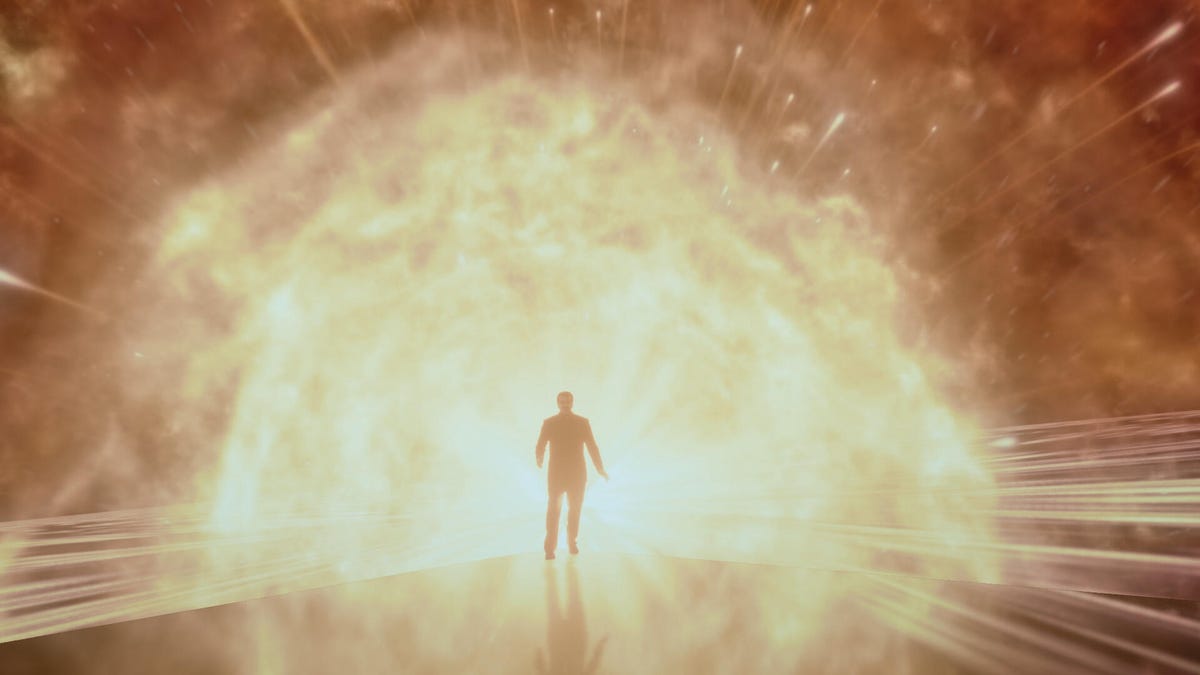Neil deGrasse Tyson's Cosmos: Possible Worlds shows a hopeful future through science
Tyson and Carl Sagan's wife Ann Druyan talk about the new season, which explores possible worlds thriving within our own planet and how we can work together for a better future.

Host Neil deGrasse Tyson stands in front of the birth of the cosmos known as the Big Bang.
Science documentaries have a tough challenge. They have to attract a wide-reaching audience larger than the usual academics, teachers and students, without dumbing down science to get our attention.
Cosmos is the kind of TV series that goes beyond the typically overcomplicated approach to science. The original series, hosted by astronomer Carl Sagan during the '80s, was rebooted in 2014 with astrophysicist Neil deGrasse Tyson at the helm. The return proved to be immensely popular, grabbing audiences with its impressive VFX and animations, storytelling and dramatic reenactments to show how history can help us transform the present into a better future.
Six years later, Tyson is back for the sequel to the sequel: Cosmos: Possible Worlds.
Premiering March 9 on National Geographic, the new season doesn't take the doomsday approach to Earth's current threats like climate change . Instead, it offers a positive outlook on how we as humans can work together toward a better world.
"This season dares to imagine the glorious future that our species can still have if we change how we think of the Earth," says Ann Druyan, Cosmos' executive producer. "Most pop culture shows the future of Earth as very dystopian and sick. But to me, we need to see the positive to rescue our civilization. That's what inspired me in this new season of Cosmos."
Druyan co-created the original Cosmos series with her husband Carl Sagan 40 years ago, as well as curated the Golden Records on NASA's twin Voyager space probes. She sees Cosmos as a way to reach people who don't normally watch TV shows about science.
"Cosmos is successful because we make big scientific ideas easier to understand and connect to," says Druyan. "Science has been so compartmentalized and kept separate from our spiritual longing. But for me personally, there is not greater spiritual uplift than knowing about nature. The tragedy is that the sciences are all separated from each other, which doesn't make sense. They're taught in a way that forgets to tell the stories of the people behind science discoveries."
The Tree of Life reimagined as a immense statue at the 2039 World's Fair in New York City.
Some of those stories in the 13-episode season include taking a closer look at the Breakthrough Starshot program that intends to send probes to faraway worlds; exploring Çatalhöyük (the oldest neolithic proto-city still in existence in modern-day Turkey); appreciating the usual lives of microscopic tardigrades; and telling the backstories of radical scholars like Baruch Spinoza, who referred to God as "the sum of the natural and physical laws of the universe."
But just as Cosmos reminds us of the importance of knowing our history of science, it propels viewers into the future showing us an idea of what the 2039 World's Fair might look like.
"We created a 2039 World's Fair with a colossus statue in the harbor larger than the Statue of Liberty," Druyan said. "The colossus is constructed from carbon dioxide that's been taken out of the atmosphere and combined with calcium carbonate. It's shaped to look like massive Tree of Life with the image of every single species engraved in its soaring branches."
The series takes a look at other planets to learn lessons about climate change, but there's also a larger notion about how science and the constants of the universe already touch microcosms on Earth in a variety of ways -- like bees using math to find nectar, and fungi that communicate with each other via their complex system of roots. Cosmos makes it clear these worlds are worthy of our attention as much as outer space.
"I love how Cosmos seamlessly brings together multiple branches of science into one coherent narrative," says Neil deGrasse Tyson. "Geology, chemistry, biology, and quantum physics all are connected. Cosmos looks at animals and plants, and ways in which the biosphere functions as a coherent whole and we are part of that biosphere."
With science under attack amid a growing number of climate change deniers, Cosmos feels more important than ever -- sending a message that science can help in our quest to reverse damage done to the planet.
"Cosmos helps viewers not only become enlightened by the science, but hopefully compelled them to recognize the value that science has that can empower us all to become better shepherds of the civilization that we've created," says Tyson.

